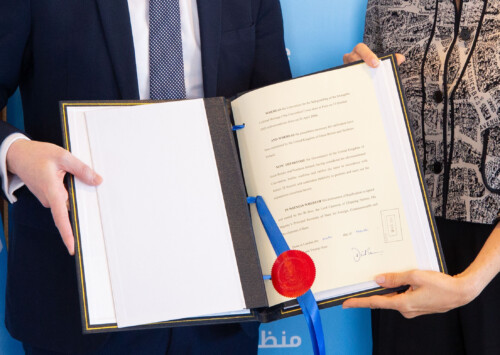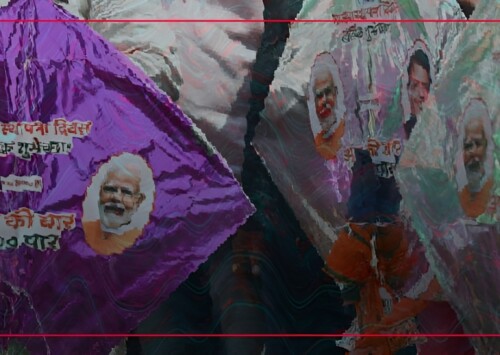Demonetisation: Drive against devils or cashtration of Indian economy?
A coin has two sides, and so does the Indian premier, Narendra Modi’s announcement to demonetise overnight the high-value currency notes of INR 500 and INR 1,000 on a national telecast on 8 November, 2016.
Why did Narendra Modi take this bold decision without elaborate consultations?
Making an emotional appeal to 1.25 billion plus Indians, the Indian Prime Minister rested his decision on five factors that were retarding development in the country — terror financing, tax evasion, black money, corruption and counterfeiting.
Modi called on the citizens to make their contribution to this grand sacrifice for cleansing the country of these ills. “It has been a matter of concern for all of us that corruption and black money tend to be accepted as part of life. This type of thinking has infested our politics, administration and society like termites. These termites have not spared a single public institution.
Time and again, I have seen that when the average citizen has to choose between accepting dishonesty and bearing inconvenience, they prefer to put up with inconvenience, and not support dishonesty.” Modi said. Since the speech, India has suffered serpentine queues and witnessed deaths, cash crunch, layoffs, debates, parliamentary deadlock…
One can’t help but wonder whether any other country has attempted demonetisation at this level.
This is not demonetisation in the true sense of the word, as is being reported by the media. Demonetisation means doing away currency altogether. In India, it is exchange of old currency for new.
Have others attempted demonetisation?
Zimbabwe, Myanmar, Libya, Turkey etc, have demonetised their currency over the years to curb hyperinflation. But, none of them did it the way the current Indian government has done it. Within three hours, almost 80 pc of Indian currency was turned into trash.
But India is not facing hyperinflation as the aforementioned countries did.
Let us examine each of the four pillars that the Prime Minister based his decisions on.
Corruption: Though Modi wants us to believe that his decision to demonetise high-value currency will root out corruption, it is actually otherwise. In January 2016, the Berlin-based corruption watchdog Transparency International (TI) had ranked India 76 out of 168 countries in its Corruption Perception Index. India’s 2015 corruption perception score of 38/100 showed any lack of improvement from the previous year’s score.
The Anti-Corruption Bureau, on the other hand, arrested two port trust officials in Kandla, in Modi’s home state of Gujarat, accepting bribe of INR 290,000, paid in new INR 2000 notes. The Bureau recovered 145 notes of Rs 2000 denomination from the culprits and also reportedly seized some documents related to benami properties and other goods. Reportedly, the new INR 2000 notes will make it easier to hide ill-gotten money.
That is not all; there have been innumerable instances of people offering new notes worth INR 70,000 in exchange for old notes worth INR 100,000!
Terror-finance: All the wailing, protesting, burning buses and stone pelting incidents in Kashmir have come to a grinding halt. Clearly, separatist leaders and local politicians used hawala money to fuel protests. According to Intelligence estimates, Pakistan pumps in INR 8-10 billion annually for the separatist groups alone in Jammu & Kashmir. Will this lull in the Kashmir valley last long? Will Pakistan-sponsored terror networks find new routes and means to finance terror? We need to wait and watch.
Tax evasion and black money: Modi may have scored by this surgical strike on those who evaded taxes. The Modi government’s Income Declaration Scheme (IDS), which opened on June 1, gave a chance to black money holders to come clean by declaring their assets by September 30 and paying tax and penalty of 45 pc on it.
The objective was to capture the entire parallel economy, worth an estimated INR 7 trillion. The output of the IDS scheme was disappointing. Though the Income Tax department had identified 9 million high-value transactions without PAN, the final disclosure of black money was merely INR 652 billion.
Black money will continue to flow in sectors such as construction and real estate, gold, jewellery trade, higher education, state funding of elections and artwork due to demand and supply and regulatory issues.
Counterfeiting: Counterfeit notes are only 400 per million. As per the Reserve Bank of India, there is only INR 4 billion worth of counterfeit currency while the total currency in circulation is INR 17.5 trillion. There are two sources of counterfeiting in India — home grown gangs indulging in criminal activity, and Pakistan’s alleged ISI-sponsored counterfeiting strategy to push fake notes into India.
Police busted a fake Indian currency racket in Hyderabad. Six were arrested and counterfeit notes of INR 2,000 amounting to over INR 200,000 were seized. Similarly, state-sponsored actors from across the border will resume their activity.
Cashtration: Most economic activities have come to a standstill. For over a fortnight, Indians have stood in queues a hundreds and thousands at bank branches, braved the disciplining of cane-wielding policemen and some have even died in an effort to exchange their own hard-earned money.
Thousands of man hours have been lost.
Further losses on account of demonetisation are yet to be estimated. Purchase of seeds and fertilisers has been affected, impacting the sowing of winter crops. Production and productivity have halted and it is impossible to pay daily wages. India’s cash economy was revolving around INR 17.5 trillion, of which INR 14.5 trillion was in INR 500 and INR 1,000 denominations. Farmers, traders and workers may be quiet, but are clearly helpless!
Cost of demonetisation
According to an estimate by the Centre for Monitoring Indian Economy (CMIE), the cost of demonetisation during the 50-day window till December 30, 2016 will be INR 1.28 trillion. Many more estimates will come in coming weeks. Couldn’t this have been implemented without making millions suffer?
To conclude, demonetisation need not mean demonization of Indian masses. Those silently enduring queues have proved that they merely want to exchange their own hard-earned money. Demonetisation is not wrong nor is any one opposing it. It is simply the manner of implementation that has left much to be desired.
This isn’t the first time. India has implemented demonetisation in 1946 and later in 1978. Many argue that it could have been implemented through an ordinance and also secretly. Unlike earlier occasions, higher-value currency in the system was over 80 pc. The UPA II government in 2014 withdrew pre-2005 notes. The exercise was smooth and gave a window to exchange till December 2015.
In his book, The Curse of Cash, Harvard University Professor, Kenneth Rogoff, emphasises on how elimination of paper currency would have desirable effects, including reduced tax evasion for high-volume cash and off-book businesses and unreported wages. Terrorists, human traffickers, drug dealers, gunrunners, corrupt politicians, and dictators would risk confiscation of their cash.
He had urged the United States to phase out the 100-dollar bill, then the 50-dollar bill, followed by the 20-dollar bill, leaving only smaller denominations in circulation. Being an economist, unlike Modi the politician, Prof Rogoff prefers a gradualist approach.
In an interview to Indian Express, Bharat Ratna and Noble Laureate Prof Amartya Sen remarked, “Both the idea and the way it was implemented were akin to a ‘despotic action’ and betrayed the ‘authoritarian’ nature of the government.”
More telling was state-run Chinese daily, Global Times praising Modi for his gamble. “The strong execution capabilities of the Communist Party of China are built on the consensus of the entire country. We will draw lessons from India’s reforms, which will help us understand our own reforms,” it said.
It probably pointed out that India was living in interesting times. Indeed we are living up to this Chinese curse.









